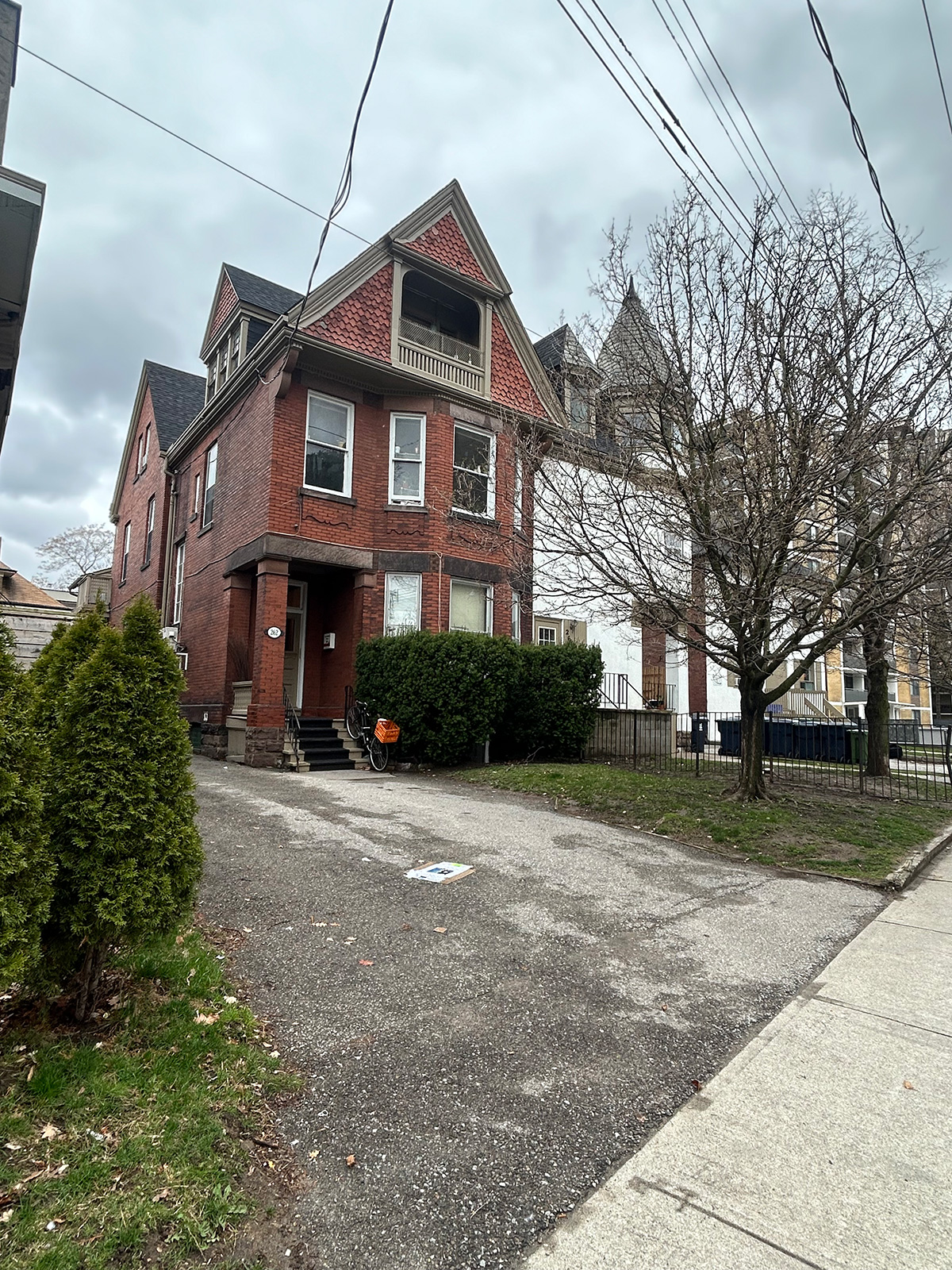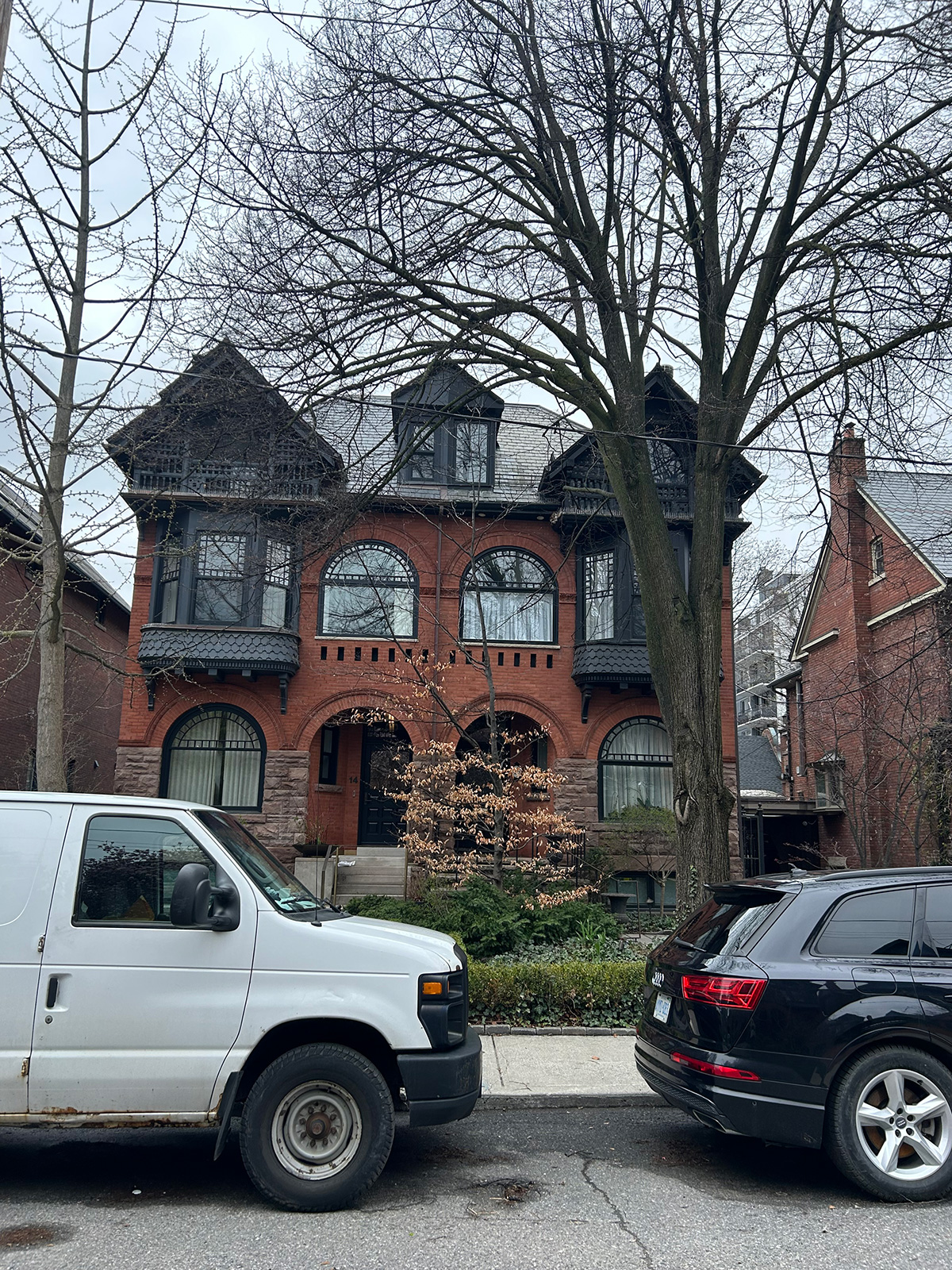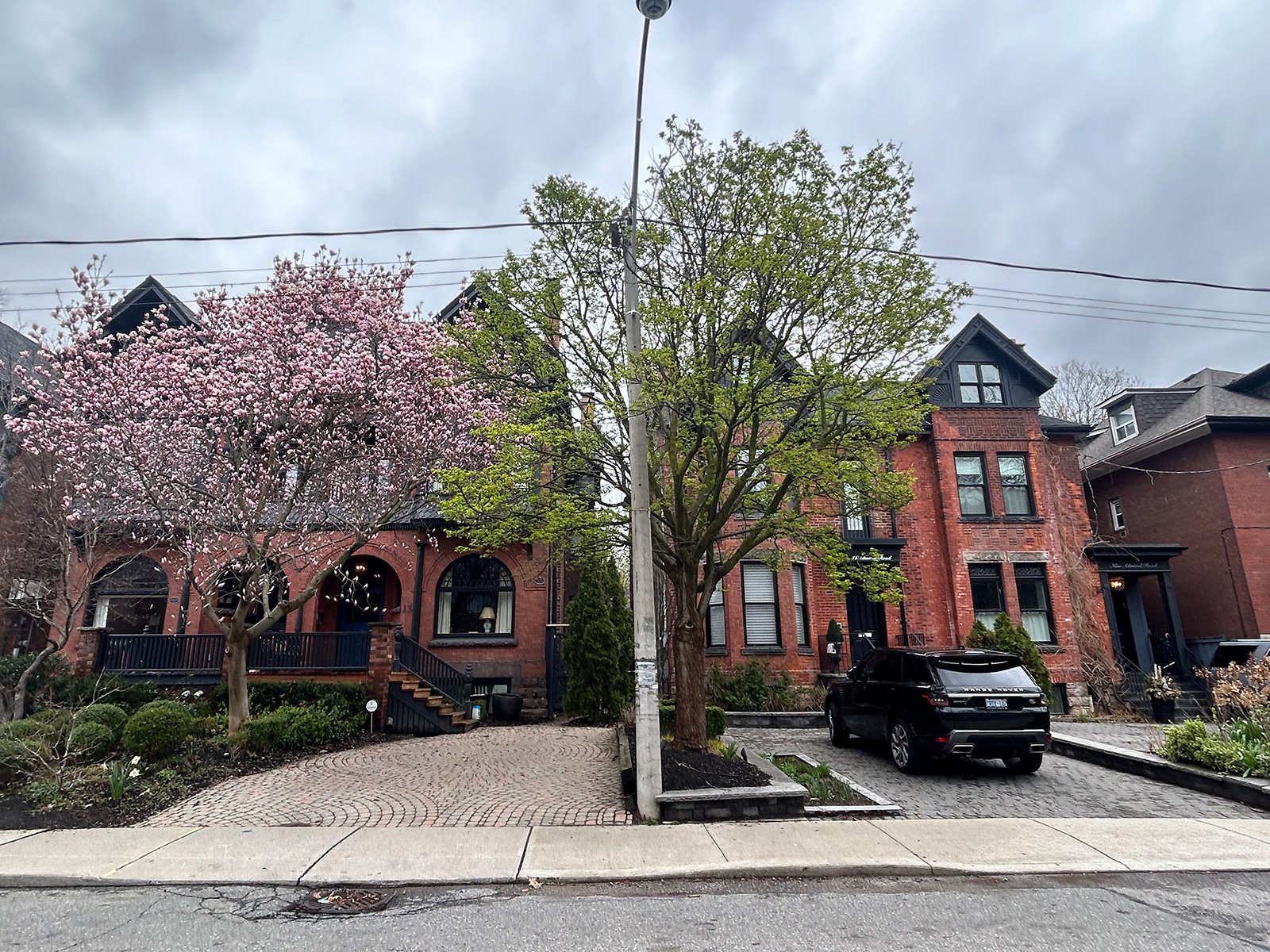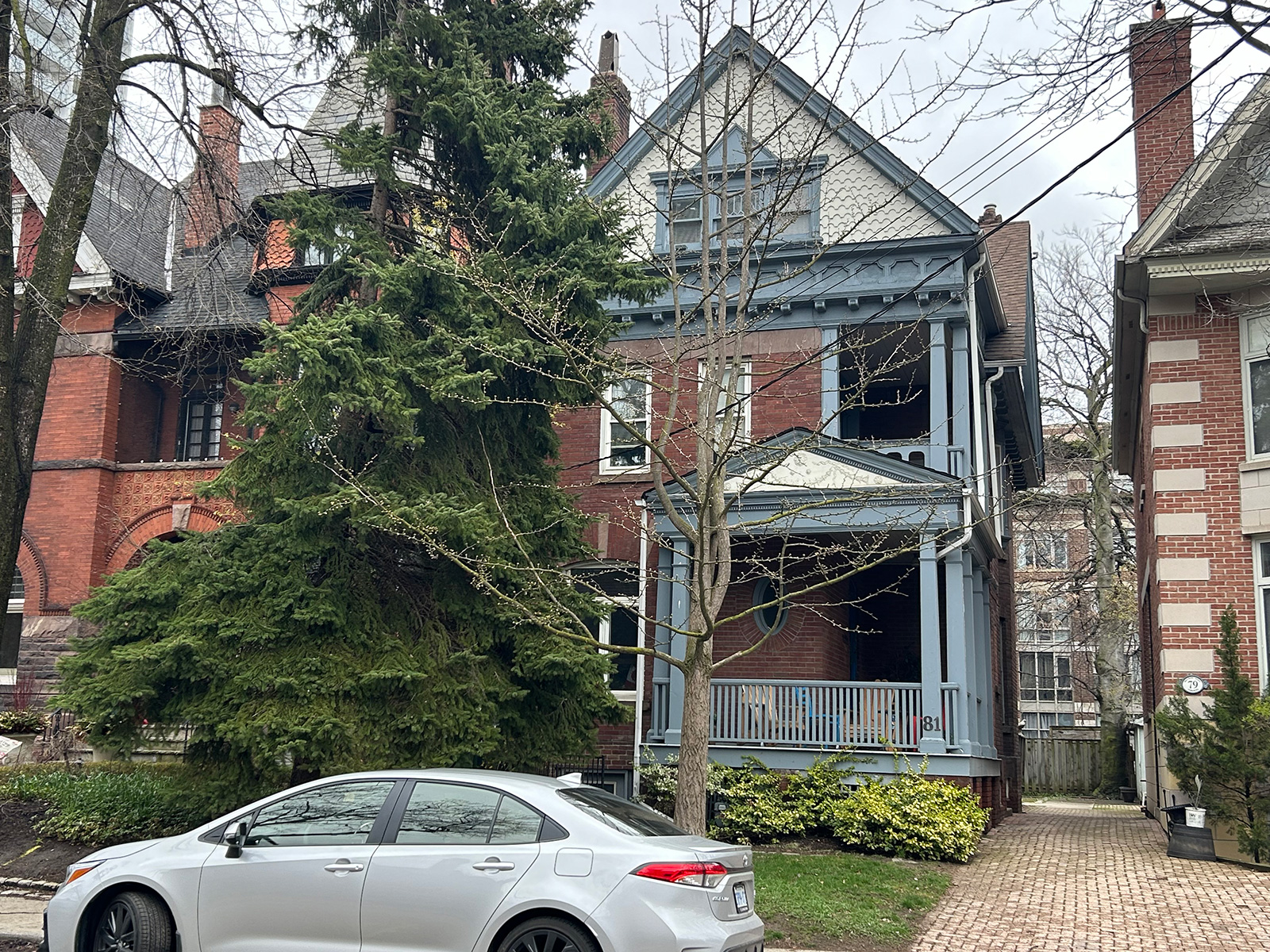Deadline for designation is end of the year


By James Bullanoff
A large number of heritage properties are at risk of losing their status in the Bloor-Annex area and across Toronto. The pictures in this story are examples of the many “listed” but not “designated” heritage properties.
This comes after the city’s heritage meeting on Feb. 26 discussed plans in the face of recent amendments to the Ontario Heritage Act. According to these amendments, properties on the heritage register that are designated remain untouched; however, listed properties will lose their status after two years if they have not been researched and determined eligible for designation.
The deadline for the first batch of listed properties to be removed is Jan. 1, 2025.
In 2023, the Ontario government prioritized building more homes by passing Bill 23, the More Homes Built Faster Act. This changed the Heritage Act and has had a major effect on the future of Toronto’s historical buildings. Areas dense with historical properties—such as the Annex—are at risk of ending up in the hands of developers.
In an email to the Gleaner, Prentiss Dantzler, assistant professor of sociology at the University of Toronto, discussed the effects this will have on the communities.



“Removing properties from the heritage register is likely to decrease the number of properties listed over the next couple of years. In response to these amendments, municipalities will have to consider more properties for full designation within a shorter amount of time,” said Dantzler.
The heritage register currently lists houses in three different ways. First, there are two types of designations. Designation part IV means that one may require permission for work that involves altering, demolishing/removing or erecting a building or structure on the property. Designation part V allows you to submit drawings or specifications to alter or demolish a building or structure on a property.


According to data collected from heritage planning, the city planning division for heritage properties, that for Ward 11, University-Rosedale there are 2743 properties designated under part V, 287 properties designated under part IV, and 593 listed properties. It is the latter, the 593 listed properties that Bill 23 will no longer protect from redevelopment.
“Most people would probably agree that the preservation of buildings that have historical and cultural value are worth saving. The beauty of the city rests in the charm of old neighbourhoods, many of which were the first destinationof immigrant communities who have cultivated their own local institutions and reputations,” said Dantzler.
According to the heritage planning map, the listed properties include major stretches of neighbourhoods, such as 9 to 19 Admiral Road, 81 to 85 Walmer Road, and 260 to 264 St. George St.
Dantzler explained that municipalities typically allow about 60 days to consider a property for full designation. He added the intention behind these amendments seems to be focused on reducing the time for properties to remain on the list, forcing municipalities to make a concrete decision on preservation.
“The actual impacts of these amendments are unclear; however, this approach does put older properties at risk for demolition. And given the relationship between older properties and lower rental rates and higher rates of visible minority households, these impacts are likely to not be felt by all residents of the city, at least not immediately.”
One example of how long it takes for properties to become designated is the West Annex Heritage Conservation District Phase One—Madison Avenue. It was approved for study in 2004 as a community-led project. It was completed in 2015 but only came into force in 2019, four years later.
“Historic communities will be at risk of losing some of their local institutions, which stand as symbols of their long-term efforts to claim a place for themselves within the city. ” said Dantzler.
The city hired consultants to develop a set of guidelines that assess the risks in prioritizing designations. A significant concern was houses situated in major transit station areas (MTSAs), specifically properties that are 500–800 meters away or a 10-minute walk from a subway station, or just about the entire Gleaner coverage area from College Street in the south to Dupont Street in the north, Avenue Road to the east and Christie to the west.
According to a map collected from the Annex Residents’ Association, the area of Spadina station makes almost the entire Annex an MTSA. St. George and Dupont stations add to the area being subject to MTSA planning guidelines.
“In the governments’ efforts to address the housing affordability crisis, we cannot forget about the importance of community,” said Dantzler.
READ MORE
- NEWS: Wychwood library celebrated (Dec. 2022)
- CHATTER: Annex Residents’ Association holds virtual AGM (June 2021)
- NEWS: The race to preserve Annex heritage (July 2021)
- NEWS: Heritage house deteriorates (Nov. 2019)
- NEWS: From heritage to hovel (May 2018)
- CHATTER: Kensington Market HCD enters planning phase (Nov. 2017)
- NEWS: Preserving culture and history (MARCH 2017)
- FORUM: Our dynamic Kensington Market (November 2016)
- NEWS: Kensington Market to become heritage district (May 2016)
- CHATTER: Community council approves Madison Avenue HCD (Oct. 2015)
